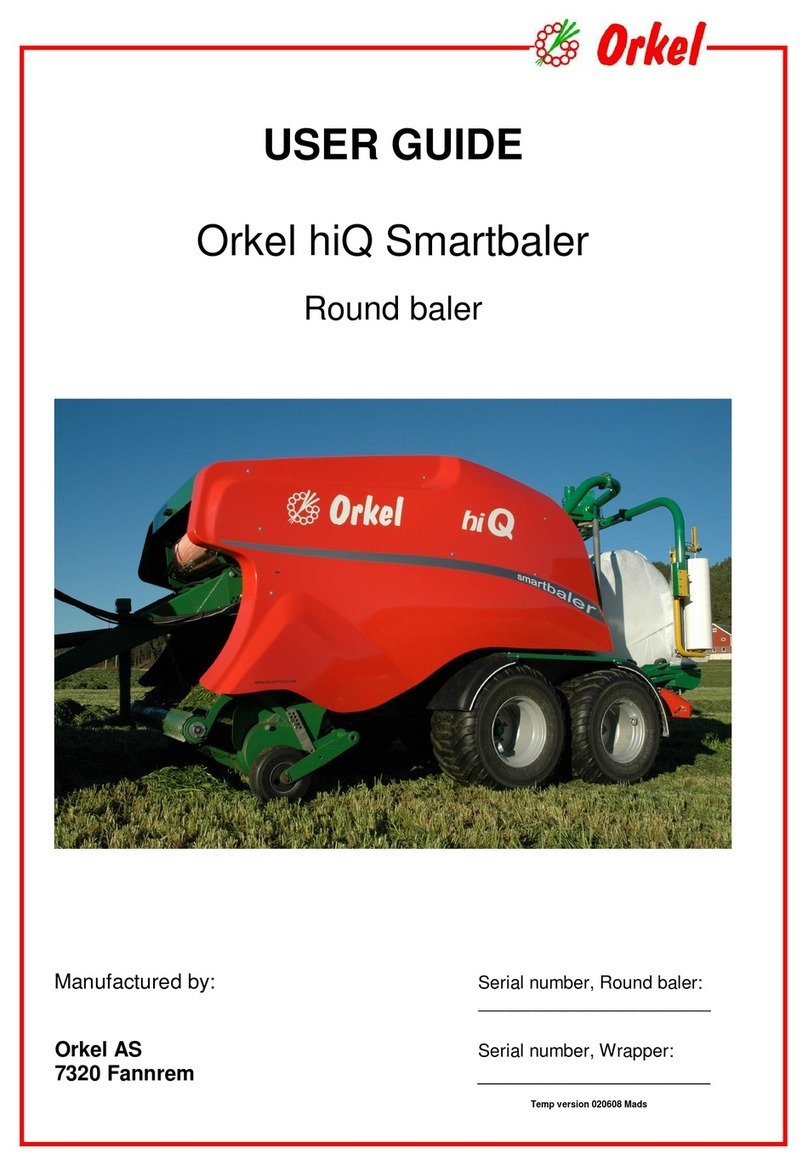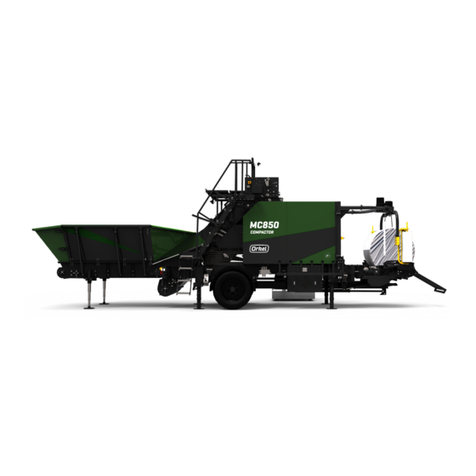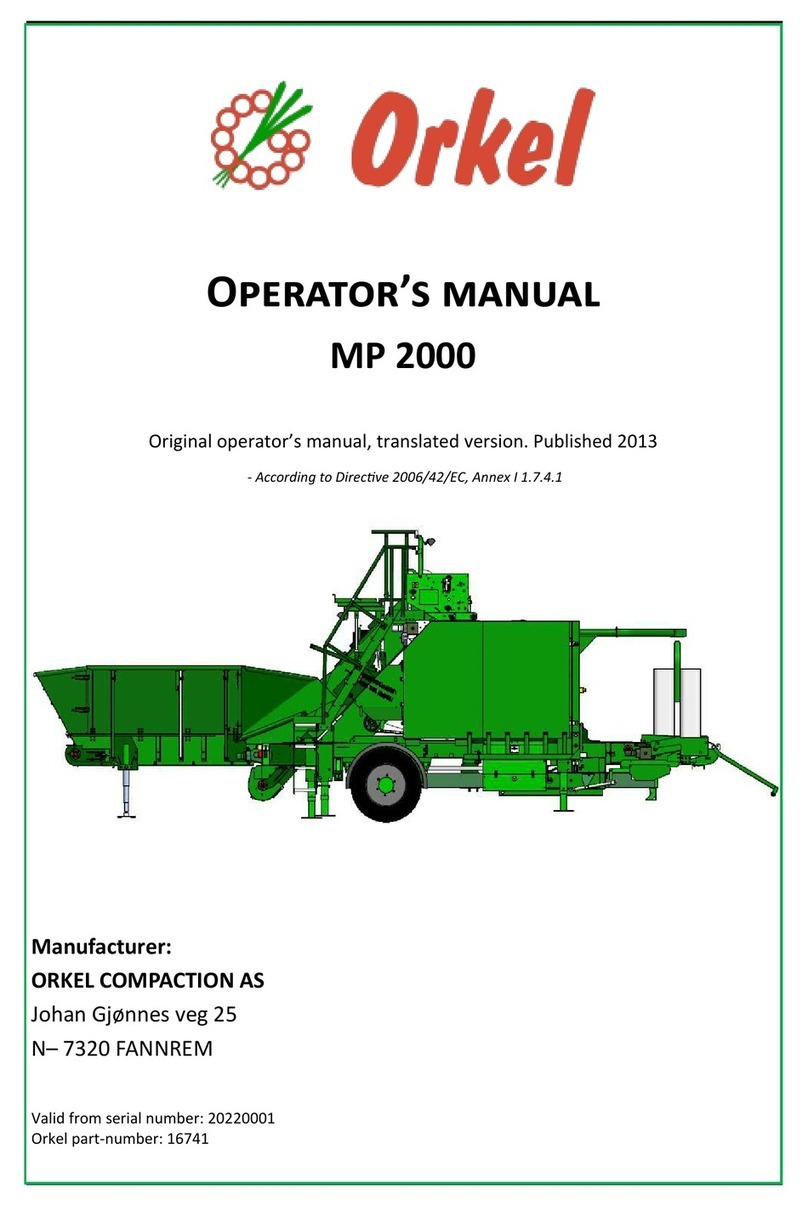
9
2.2 General safety instructions
Before any maintenance, cleaning, disassembly of parts and adjustment is made on the
machine. Always: Disengage the PTO drive clutch. Stop the tractor engine, activate
the hand brake and remove the key to prevent the tractor from being started
accidentally.
Before operation:
Thoroughly read and understand the relevant chapter in the operators manual. Do not
start the tractor before all persons are in safe distance to the machine. Keep children
and spectators off and away from machine when operating. The area around the ma
chine should be kept clear at all times. Keep area between tractor and baler clear of
people under coupling and uncoupling.
Operation:
Do not wear loose or baggy clothing, when working on the machine and keep hands,
feet and clothing away from moving parts. Stop tractor engine before removing guards
and shields. Keep all guards and shields in place and in correct order. Use ear protect
tion if the noise of the machine and tractor is too loud. (without cabin)
It is not allowed to stay on the machine when operating.
Never remove material from machine when operating, and never feed material (twine,
net or crop) manually into machine. Stop tractor engine and remove the key before un
blocking pick up.
When baling dry material like dry grass, hay or straw, extra care has to be taken.
Service/maintenance:
Before starting, make sure of the machine is clear of people, and that all tools and
loose objects have been removed and correctly stowed. Do not do service or remove
hydraulic hoses when the hydraulic system is under pressure.
Owner:
The owner is responsible for making this information available to the operator. This to
ensure safe use and proper maintenance of the baler.
WARNING: CHILDREN UNDER 16 YEARS OF AGE MUST NEVER OP-
ERATE THE MACHINE!

































